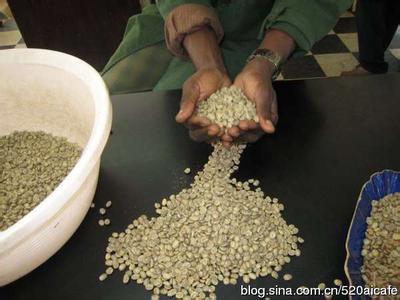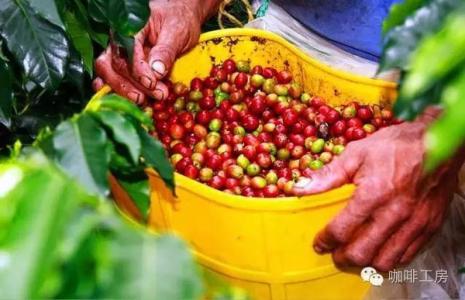The increasingly well-known coffee production site of Los Congo Manor in Rwanda
In recent years, Rwanda has made great progress in coffee production and processing. First of all, coffee fruits are picked manually; coffee production cooperatives are set up all over the country to provide technical guidance to coffee farmers; coffee farmers send them to coffee processing stations for cleaning and screening as soon as possible after picking, and select mature and high-quality coffee fruits for processing.
The coffee fruit needs to be transported to the processing plant as soon as possible after picking, but due to the lack of domestic facilities, it is unable to deal with the fruit at the first time. The fruits are piled up after being picked, which will continue to develop and accelerate mildew and decay due to lack of ventilation. Rotten fruits will affect the quality of coffee and show defective flavor.
After the fresh coffee cherries have been picked from the trees by the farmers, they should be bagged and sent to the treatment plant in time, weighed, and then poured into the working pool. for the first time a large amount of water is washed and filtered (one of the treatment plants is manually selected) stones, branches and immature cherries. Next, it is transported to the peeling machine to remove the peel and pulp.
Coffee is treated by washing, and water is scarce throughout eastern Africa. Some of them pump water from the ground, and some collect Rain Water. Clean water is a luxury here. The next step is to sort out the defective beans again, and then use 12-36 hours to peel off the raw beans which are still wrapped in mucus. Now there are many ways to deal with them, such as honey treatment, which will be divided into red, yellow and black. Kenya and Rwanda ferment raw beans with pectin in natural contact with microorganisms in the air, and the whole producing area can smell it, which is as charming as the red currant in red wine.

Important Notice :
前街咖啡 FrontStreet Coffee has moved to new addredd:
FrontStreet Coffee Address: 315,Donghua East Road,GuangZhou
Tel:020 38364473
- Prev

Introduction of planting techniques of Columbia Spring Manor, COE Champion Manor
Introduction to the planting techniques of COE Champion Manor Columbia Spring Manor the province of Cauca Valley goes south to Cauca, and then southeast to Vera, the second largest coffee producing region in Colombia, which is also the largest boutique bean producing area. Further south is the boutique producing area Nalinglong province, both of which have volcanic and fertile volcanic ash soil, because volcanic ash is rich in minerals, nourishing coffee fields and helping coffee fields.
- Next

Brief introduction of lemon tree manor in Nicaraguan coffee producer, one of the poorest countries in Central America
The coffee industry is still in a relatively backward state, while coffee farmers are in extreme poverty. In the picking process of coffee fruits, manual picking is used to pick the fully ripe fruits one by one, which usually takes three times to complete. Although the manual picking method has high labor cost and low picking efficiency, it can protect the plant to a great extent and prevent fruit trees from being affected in the process of picking.
Related
- Does Rose Summer choose Blue, Green or Red? Detailed explanation of Rose Summer Coffee plots and Classification in Panamanian Jade Manor
- What is the difference between the origin, producing area, processing plant, cooperative and manor of coffee beans?
- How fine does the espresso powder fit? how to grind the espresso?
- Sca coffee roasting degree color card coffee roasting degree 8 roasting color values what do you mean?
- The practice of lattes: how to make lattes at home
- Introduction to Indonesian Fine Coffee beans-- Java Coffee producing area of Indonesian Arabica Coffee
- How much will the flavor of light and medium roasted rose summer be expressed? What baking level is rose summer suitable for?
- Introduction to the characteristics of washing, sun-drying or wet-planing coffee commonly used in Mantenin, Indonesia
- Price characteristics of Arabica Coffee Bean Starbucks introduction to Manning Coffee Bean Taste producing area Variety Manor
- What is the authentic Yega flavor? What are the flavor characteristics of the really excellent Yejasuffi coffee beans?

